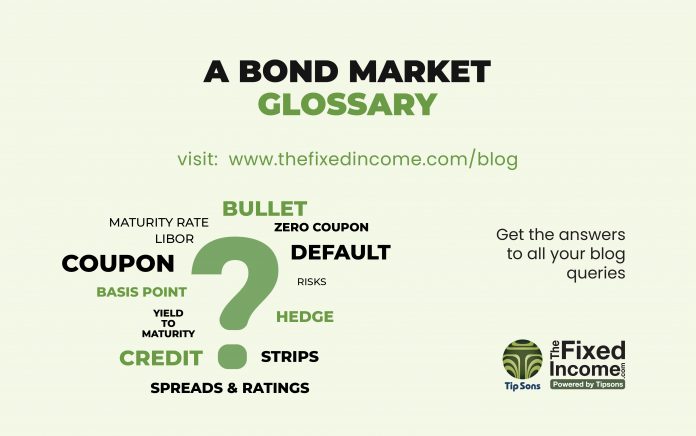Understanding Bond Trader’s Lingo
Just to ensure that we are speaking the same language, rather than the “Greek and Latin” that my Physics Professor accused me of rattling off, we visit the A, B, C to Z of bond trader’s lingo. Some terms have been visited before. If you recall them, we now move to a wider range.
Key Terms and Concepts in Bond Trading
Accreted Value: applies to a zero-coupon bond with interest built-in, or accrued to the present time.
Accrued interest is the amount of interest earned on a bond, payable at a future date. This is handled at the “clean” or “dirty” price in transactions.
Amortization is the installment to reduce outstanding debt.
Arbitrage is the profit made in price or interest rate differences between markets. An arbitrageur helps create liquidity and reduces the difference between markets and product prices.
Basis Point, “beep” or “bps” in market-speak is 1% of 1% (0.01%). Prices and yields are quoted in basis points because the market pricing is extremely fine.
Benchmark can be of 2 kinds. 1 is a ‘benchmark bond’ whose yield represents the market and its movement. An index is also a benchmark.
A Bid is the price a buyer is willing to pay for a security.
Bond or debenture is the security representing money borrowed by the “issuer”. These are the base security of the fixed-income market. The issuer could be the government (issuing “gilts” and corporate).
A Bullet is the maturity payment of a bond.
Call is the right of the issuer to repay money to the bondholder. A bond that has the feature is callable on the call date.
Cap is the highest interest rate payable on a floating rate bond.
Convertible is a bond that may, or will be converted into equity.
Coupon is the term professional bond players use to say “interest”.
Covenant are the terms of the loan/ borrowing documents.
Credit Ratings are a professional indicator of credit quality.
Credit spread is the difference in yield between papers of different credit quality, but with the same features of face value, maturity, and coupon.
Current yield is the percentage of returns in interest on the current market value. The face value or maturity amount is ignored.
Debt service coverage is the ratio of net revenue to the amount required to service borrowing obligations.
Default risk is the chances of not being repaid on the due date.
Duration is the weighted average of a bond’s cashflows. This is an important parameter to consider in bond valuation and risk.
Hedge is a technique used in safeguarding the portfolio value from adverse movements.
Interest is the (rate of) compensation for a loan.
Junk Bond provides a high yield to compensate for its lower credit rating of BB or lower.
LIBOR (London Inter-Bank Offered Rate) is the short-term inter-bank rate on Eurodollar borrowing. It is an important global benchmark for setting rates. MIBOR, Mumbai Inter-Bank Offered Rate is the local equivalent and is the inter-bank call rate.
Maturity date is the final date for redemption or returning the principal on the bond.
Offer is the rate at which a seller wishes to sell a security.
Perps or Perpetual Bonds have no maturity date. They are technically issued forever. In India banks have a call embedded on a perp every 5 years, while others, mostly NBFCs have a call every 10 years. Some perps offer a higher coupon if they do not call the bond. Perps are quasi-equity, that is they take on the risk of equity in case of a default. They are called AT-1 Bonds (Tier-1 capital) under Basel-3 norms for banking.
Premium Bond is priced above par.
STRIPS are separately traded components of a bond. Each coupon payment and the repayment of principal are separated and traded independently.
Subordinated debt will pay interest and principal only after the other creditors. These include Perps.
Trustee is appointed by the issuer to safeguard the bondholder. Trustees are mostly banks, or subsidiaries of banks.
Yield is the annual return earned on a bond. Yield to Maturity (YTM) considers annual return on the bond assuming that interest received till the maturity of the bond will also be reinvested at the same rate. It shows the total return on the bond till it matures.
Yield Curve is a graphical representation of the yield and maturity of different bonds of the same credit rating.
Yield to Call shows the returns on security assuming that the bond will be redeemed at the call date.
Zero-Coupon Bond does not pay a periodic coupon. It is like a cumulative bond/ deposit that pays the entire returns along with the principal at the time of maturity.
























